The motley YouTube stars
India's new YouTube celebrities are going well beyond urban audiences, with varied languages and content
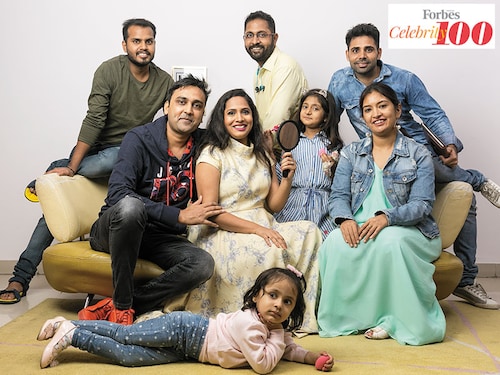

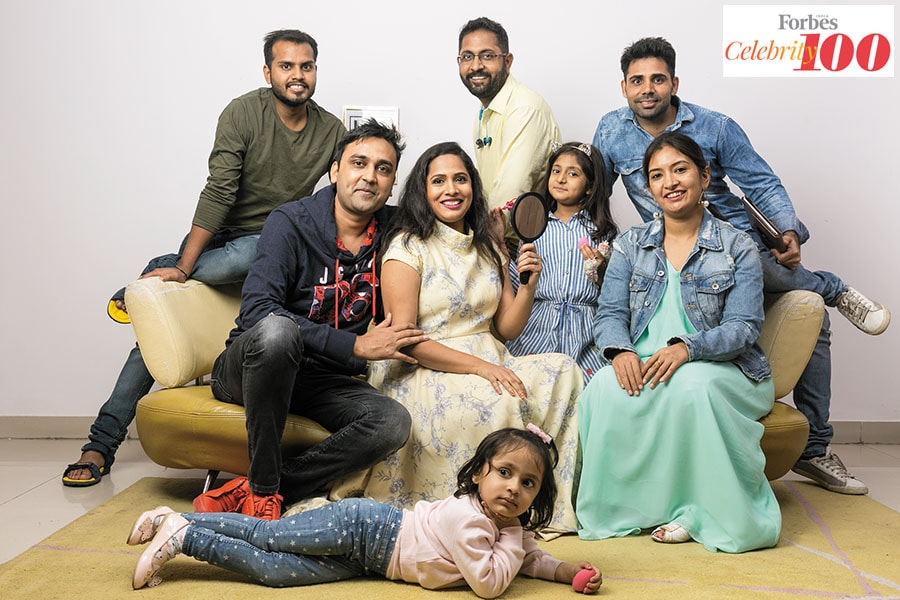 Shruti Anand (centre) started her YouTube channel in 2011 as a hobby. Today, she and her husband Arjun Sahu, along with their family, run some of India’s top YouTube channels covering topics like beauty, lifestyle, cooking and kids
Shruti Anand (centre) started her YouTube channel in 2011 as a hobby. Today, she and her husband Arjun Sahu, along with their family, run some of India’s top YouTube channels covering topics like beauty, lifestyle, cooking and kids
Image: Madhu Kapparath
(Note: Unfortunately, just a few days after this issue of Forbes India went to press, 107-year-old Mastanamma passed away. Our deepest condolences to her family and millions of fans around the world.)
Zoomed in: multi-coloured flowers, fluttering in the breeze zoomed out: A green field, mud huts and a river in the background, a large, oval watermelon in focus. A wizened face with a toothless smile comes into the frame.
Mastanamma, as the small, grandmother-like figure is fondly called, wears a simple cotton saree, her hair in an oiled bun, and a mischievous glint in her eyes. She is cooking chicken inside the watermelon, using a traditional recipe and a simple coal chulha outdoors, speaking in Telugu that is translated into English subtitles. Mastanamma claims to be 107 years old, and lives in a village near Guntur, Andhra Pradesh. She has 1.1 million subscribers on YouTube—clocking up to 15 million views on each video.
Mastanamma’s fans are from Rajasthan, Pakistan, Canada, Colombia, Serbia, Mexico, Indonesia… the list goes on. Hers is the new face of India’s YouTube celebrity, steadily pushing past urban and linguistic borders and barriers. As India’s non-metro population gets increasingly hooked to mobile data and offbeat content, a new category of YouTube stars is emerging—and they are no longer just of the typically popular young-male-urban-comedian variety.
India has 390 million actively connected internet users. According to media research firm Comscore, 245 million Indians are active on YouTube per month. “This is thanks to two important sub-axes—language and place. Since 2015, we have seen massive growth in YouTube videos in South India, primarily in Tamil, Telugu and Kannada, and also in Punjabi, Marathi and Gujarati,” says Satya Raghavan, entertainment head, YouTube India. Among YouTube’s top 10 countries, India is the fastest growing in terms of total and mobile device watch-time. A staggering 95 percent of video consumption in India is in vernacular languages. “There’s an obvious explosion of heterogeneous viewers, leading to a community of heterogeneous creators,” he adds.
“The obvious inflection point was the launch of Jio internet,” says Roopak Saluja, founder and CEO of content company The 120 Media Collective. “The moment you have consumers, an ecosystem of creators will be formed. The same content that’s popular in Mumbai or Delhi may not apply to the heartland, so we’re seeing more creators from different age groups and parts of India—and it is mind-boggling how quickly this transformation has taken place.”
There will be a huge rise, Saluja adds, in the number of YouTube stars from the heartlands in 2019. YouTube India is working to encourage this, with on-ground workshops and engagement support (training sessions on how to increase their engagement metrics with their viewers) in various languages. Besides, now brands can advertise in Bengali, Tamil and Telugu as well, “and we’re working on adding more languages,” says Raghavan.
Happy hours
With a comedy channel that only began in March 2017, 24-year-old Amit Bhadana has become India’s No. 1 YouTube creator, with 11.7 million subscribers, which is neck-and-neck with that of comedian Bhuvan Bam, who has 11.2 million subscribers. While Bam’s audience is mostly urban, Bhadana goes beyond cities.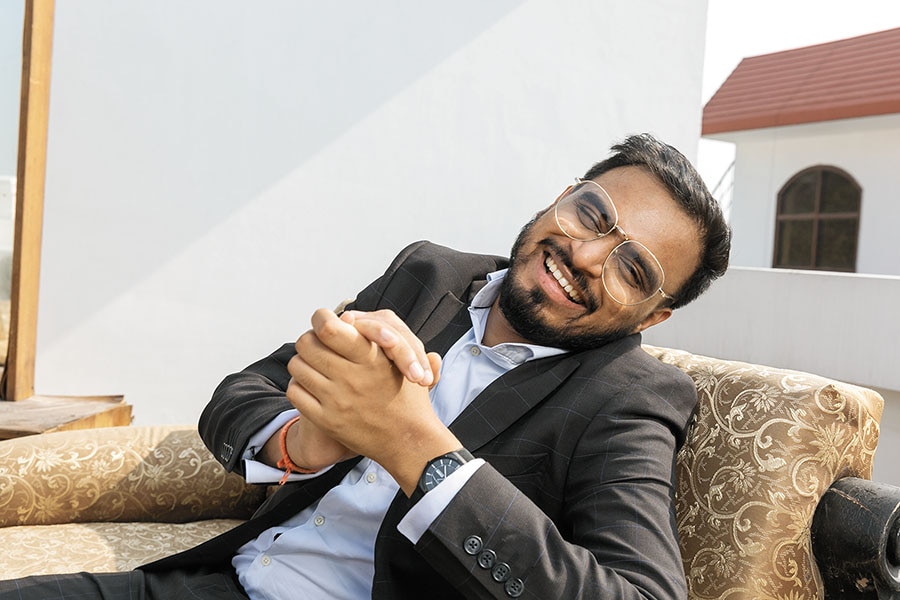 Comedian Amit Bhadana has become India’s No. 1 YouTube creator, with more than 11 million subscribers
Comedian Amit Bhadana has become India’s No. 1 YouTube creator, with more than 11 million subscribers
Image: Madhu Kapparath
“I always wondered why no one was making content for people beyond Mumbai and Delhi,” says Delhi-based Bhadana, who grew up between Bulandshahr in UP and Delhi. “For instance, there are many others who make funny videos about brother-sister relationships. But the situations are different for non-metro viewers: We don’t fight about which restaurant to go to, we fight about who will switch off the water pump.”
Bhadana’s videos are typically comedy sketches that relate to everyday situations—college life, daily commute, gym characters, relationships, gully cricket, and family dynamics. They are in Hindi, and the slang used is typical of Uttar Pradesh and Haryana. These videos, on an average, get 20 to 40 million views. “Now, I’m working on making content that resonates with people in the east as well,” he says.
This quick rise to fame has changed his life overnight. Bhadana says that a boy in Karnataka got himself a tattoo dedicated to him, a group of young boys offers prayers to his photo, while a girl at his Kolkata show couldn’t stop crying when she got to meet him.
Bhadana has received opportunities for large-scale brand collaborations as well as offers from Bollywood, but is happy with his YouTube fame for the moment. “It’s a neat, transparent platform. I know that it isn’t possible to become a millionaire on YouTube in India, but I’m not interested in the money at the moment. I’m earning enough for daily expenses, and focussing on building organic content,” he says.
At home, however, not much has changed: His family still asks him to run to the local grocer on errands. “I tell them that I shouldn’t, because a crowd will form, but they put me in my place,” he says.
All in the family
When Shruti Anand, 33, started her YouTube channel in 2011, it was a hobby and a way to meet new people. She and her husband, Arjun Sahu, 36, were working at IT firms in the US. With a knack for fashion, her quick DIY hairstyle videos gained good traction. When the couple moved back to India in 2013, Anand decided to focus on YouTube. Five years later, the couple runs some of India’s top YouTube channels and a full-fledged content company and the rest of the family has joined in.
“Our daughter was born in 2015, when I was working as a project manager at an IT firm in Delhi,” says Sahu. “We were getting good returns on our YouTube investments. So, in 2016, I decided to quit my job and we began to strategise on how to make this our primary source of income.”
The couple’s niece, nine-year-old Anantya, would often feature in Anand’s hairstyle videos and vlogs. “We recognised the need for a channel dedicated to children, and started one for her called MyMissAnand,” says Sahu. “We are now making sketch videos for her channel too. It has really clicked with the audience.”
MyMissAnand has 1.4 million subscribers, while Shruti’s own channel, Shruti Arjun Anand, has 2.6 million. The couple also roped in their sister-in-law Nisha (Anantya’s mother), to launch a recipe channel called Cook with Nisha (788,000 subscribers), and launched a Hindi channel dedicated to beauty and make-up, called Anaysa (4.1 million subscribers). While Anand uses a mix of English and Hindi on her own channel, the rest of them are purely in Hindi, targeting tier-2 and tier-3 audiences. Anand’s own channel now includes beauty, lifestyle and daily routine videos, and sketch comedies.
undefinedA staggering 95 percent of video consumption is in vernacular languages[/bq]
Anand’s three-year-old daughter often features in her daily vlogs, and this has impacted her growing up. “We try to make sure both Anantya and my daughter have a normal childhood, but they get recognised everywhere. We don’t leave Anantya even in a different aisle while inside a store, for instance,” she says. “With my daughter too, people just want to come up and hug her. It’s confusing for her because on the one hand, I’m teaching her about not talking to strangers or letting them touch her, and on the other, asking her to smile and let strangers pinch her cheeks.”
“If tier-3 viewers are hungrily consuming data, someone needs to be creating that content for them. There’s huge potential for growth there, and we’re thankful to be early movers,” says Sahu. Their content is family-oriented, without profanities, mostly targeting homemakers and young women. “We never try to show an ultra-modern life or things like alcohol, because our audience is quite young,” he adds. “Moreover, since we target a mass audience, the products we showcase are affordable.”
Their revenue is currently split between advertising and brand collaborations. “Nobody wants to be a YouTuber for 20 years, and we’re exploring ways in which we can move beyond it,” says Anand. “We already work like a digital media company and understand what sort of videos work, so we’re looking at avenues in which we can create content for others.”
“We’re also looking at offline opportunities,” adds Sahu. “Shruti has been an authority on make-up, so we could launch our own line of beauty products. We have a large kids following, and are looking at ventures of kids’ apparel. The options are all on the table.”
Female, and funny
Srishti Dixit, 25, is one of the country’s most recognisable faces of viral videos. Part of Buzzfeed India’s video team, she has made a brand of herself. While you’ll see her playing exaggerated versions of Kareena Kapoor’s ‘Poo’ in one video, and Shakti Kapoor’s ‘Crime Master Gogo’ in another, Dixit is also known for her unique take on everyday biases related to stereotypes, caste, class and gender. Most of Buzzfeed India’s most popular videos feature Dixit and each rakes in upwards of 4 million views.
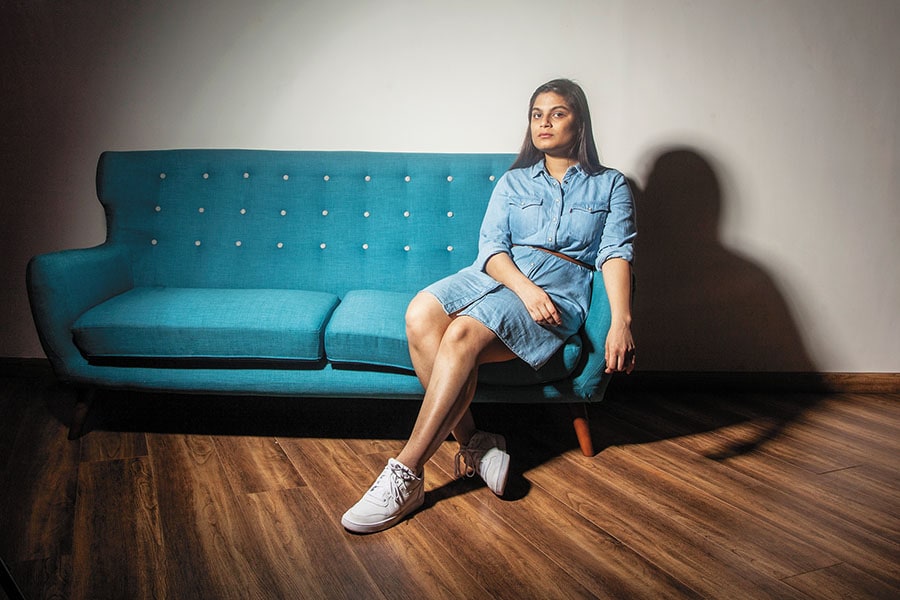 Buzzfeed video producer Srishti Dixit is known for her unique take on gender and stereotypes
Buzzfeed video producer Srishti Dixit is known for her unique take on gender and stereotypes
Image: Aditi Tailang
Buzzfeed India allows its prominent stars to create their own Facebook pages and build a fan following, and Dixit leads the pack. While her target audience is mainly women between 15 and 45, she is often recognised by school-going children and older women too. She was recently interviewed by news portal Firstpost (part of the Network 18 Group, which Forbes India is a part of) along with politician and author Shashi Tharoor, who told her that his daughter-in-law follows her, and the interview helped him gain “street cred”.
Dixit grew up in Kanpur, and struggled with an eating disorder while in college. “I was obsessed with being thin, which has really messed up my relationship with my body. I’ve unlearned a lot of problematic behaviour, internalised because of social conditioning,” she says. “Now, I’m smart enough to know that nobody looks like Deepika Padukone except Deepika Padukone, and it takes an army of people to get her to stay that way. This realisation has made me free to create comedy videos in an unrestricted manner both in terms of content and physicality. Women are usually restrained in videos. I act as crazy as I want, no holds barred, and I can eat!”
Comedy, she says, is still seen as a platform for men to entertain other men. “Female comedy does have to be slightly different, because our experiences are different,” she adds. “Many men won’t laugh at jokes about periods or bra straps, but we are building a strong female community—and some progressive men too—that is waking up to content that makes them laugh.”
Kitchens not confidential
The food category, largely, has given rise to a clutch of older YouTubers. 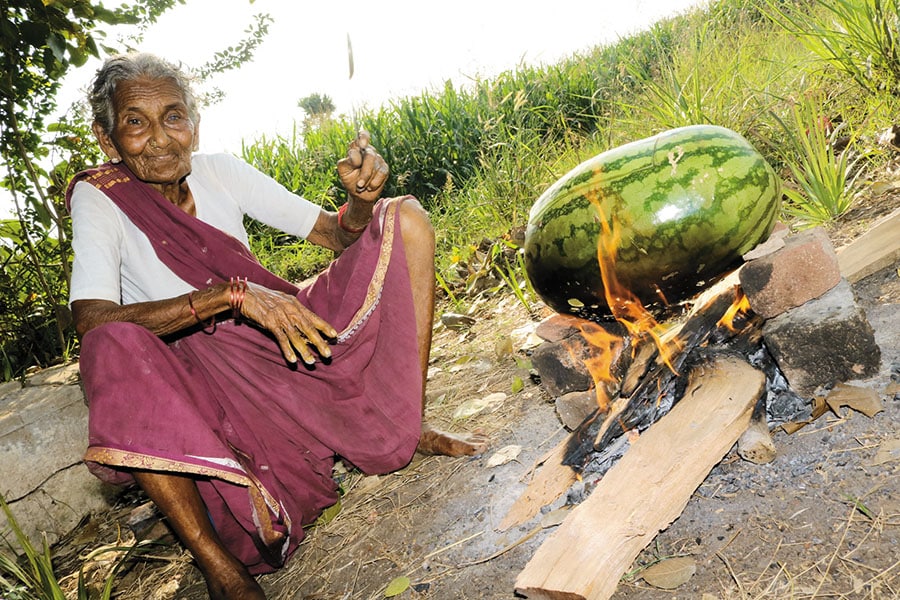 Mastanamma cooks unusual traditional dishes like emu egg fry and watermelon chicken
Mastanamma cooks unusual traditional dishes like emu egg fry and watermelon chicken
For 107-year-old Mastanamma’s channel, started in August 2016, her great-grandson and great-grand-nephew work as full-time producers. Mastanamma’s is one of many popular ‘village food’ channels, which showcase daily life in rural India and real farm-to-fork cooking. “Everyone is running after fast food now, and the idea was to showcase our traditional recipes to the world,” says Srinath Reddy, Mastanamma’s great-grand-nephew. “Guntur is famous for spices, and our videos highlight their use and versatility. The best part is that Mastanamma is not acting for the camera—this is how she is, cheeky and mischievous, and a wonderful cook!”
So Mastanamma’s videos show her cooking unusual, traditional dishes such as emu egg fry, watermelon chicken, and lamb head curry. The videos do not show a stylised or choreographed version of the cooking process, but a real depiction, which is almost therapeutic to watch. Quantities and exact recipes are not mentioned the idea is more to elucidate methods and practices, rather than provide recipes to replicate.
On the other hand, Delhi-based Nisha Madhulika’s channel—the country’s top food YouTube channel with 5.6 million subscribers and the seventh most-subscribed in the country across categories—is shot in a kitchen and features easy-to-follow, methodical recipes. She cooks only vegetarian food.
Madhulika, 59, started out with a hobby recipe blog and website almost 10 years ago, and finally considered giving in to her blog readers’ requests of posting recipe videos. “Now, I do about five videos per week,” she says. “Earlier, I used to wake up at 4 am to prepare for the videos as I had only my husband around to shoot them for me, and he would leave for work at 9 am. Now, thankfully, I have a team. I was very nervous and it was difficult in the beginning, but now we have understood how to use the right lighting and shoot quality videos.”
Food videos aren’t easy to shoot, she adds. If you’ve made a mistake, for instance, and if something has gotten burnt or has remained undercooked, you have to start over. “The biggest change in my life is that I’m now confident that I can make something of myself,” she says. “YouTube has taught me that even at this age.”
Pulling the right strings
Tushar Lall, 23, grew up listening to jazz and Western classical music. Now, the Mumbai boy runs the Indian Jam Project, an initiative and YouTube channel to promote Indian music and instruments, which garners millions of views. It has received recognition from international bigwigs such as American rock band Imagine Dragons, the BBC and actor Mark Hamill, who played Luke Skywalker in the original Star Wars trilogy. 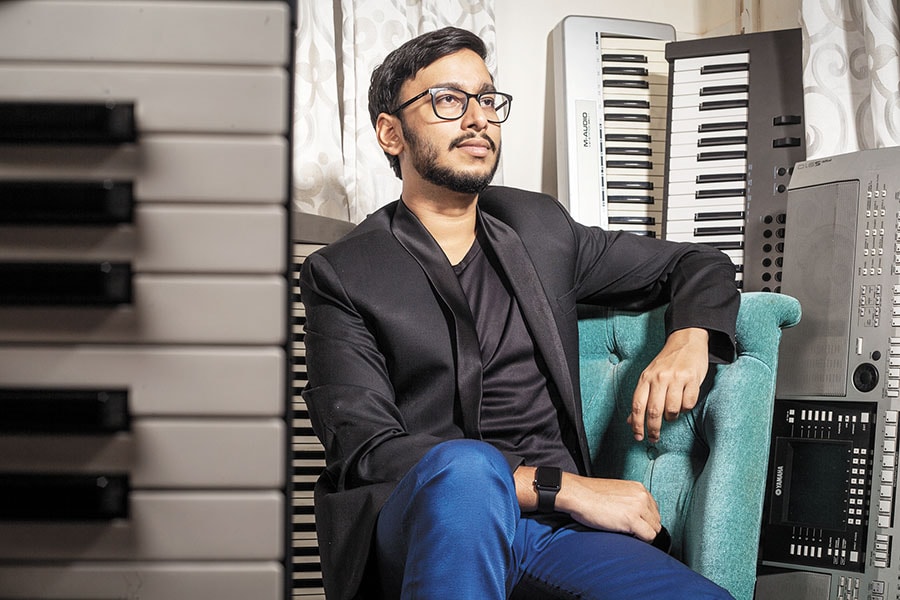 Tushar Lall runs The Indian Jam Project, a channel that promotes Indian music and instruments
Tushar Lall runs The Indian Jam Project, a channel that promotes Indian music and instruments
Image: Aditi Tailang
Lall’s three-year-old channel features covers of popular Western hits, re-arranged and played on Indian instruments. So Coldplay’s ‘Fix You’, for instance, is rendered via an ensemble of harmonium [which Lall plays], flute, sitar, tabla and sarangi, while the Pirates of the Caribbean theme song is reimagined as a flute-tabla-sarangi melody. Lall’s rendition of the theme song of the BBC show Sherlock went viral and eventually BBC itself took notice. Michael Price, the original composer and Emmy Award winner, called the score ‘outrageously great’.
Last month, a partner brand flew Lall to interact with Imagine Dragons in Las Vegas he re-jigged their hit song ‘Believer’ to play on the harmonium, sitar, sarangi, tabla and drums. The band’s frontman, Dan Reynolds, greeted Lall in Vegas with “It’s an honour to have you here”. “I didn’t know what to say to that, coming from a global superstar,” says Lall. “They said it was incredible to see how it had turned out, and that made me so happy.”
Lall recalls overhearing an argument after a concert between a top classical performer and the organisers. “He received only a shawl and bouquet for his performance. My goal is to make sure this practice is eradicated in Indian classical music,” he says. While Lall’s videos are funded by Qyuki, a digital network for filmmakers and musicians, his main source of revenue is from jingles and advertisements, and live shows, all of which are fuelled by his YouTube popularity. He has got Bollywood offers, too, but is currently working on a Hollywood film and an Indo-American production. He has also composed an original track called ‘Sifar’, due for release in January.
“I don’t work well with lyrics, and I want to bring the ‘piece’ culture back to India—when composers are known for making a stellar melody or piece,” he says. “I also want to show that an orchestra doesn’t only have to be of a violin, cello and double bass it can also be of a sarangi, tabla and harmonium. I’m prepared for the fact that ‘Munni Badnaam Hui’ will garner more views, but I want to cater to the small, growing community that can help me push classical Indian music forward, showing that a sitar can be used to play not just Raag Yaman but Star Wars too.”
First Published: Dec 13, 2018, 11:19
Subscribe Now